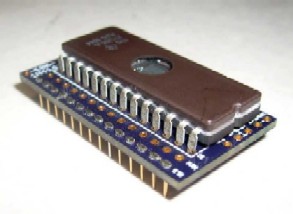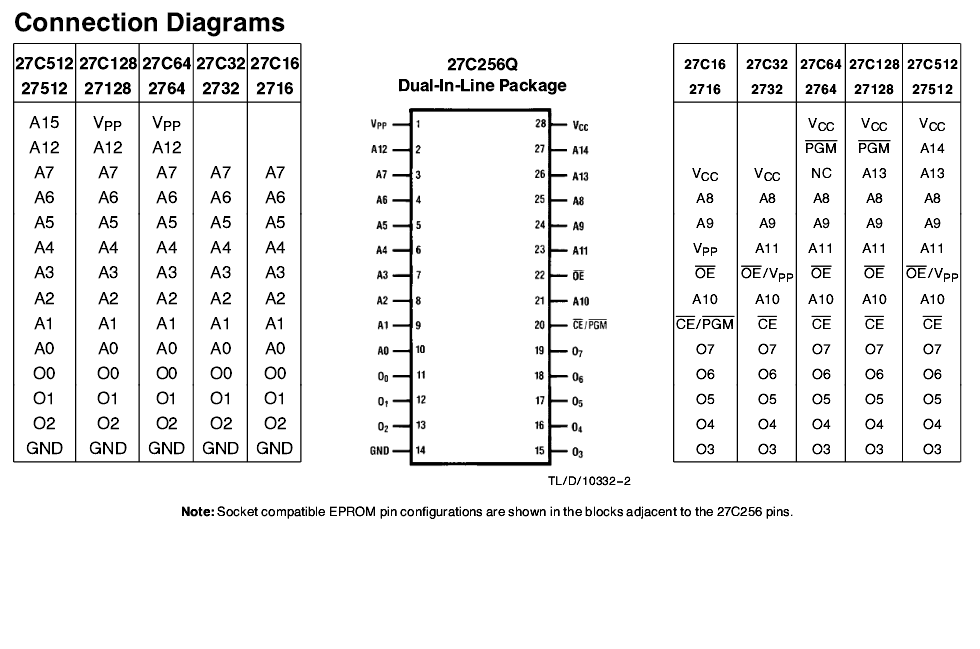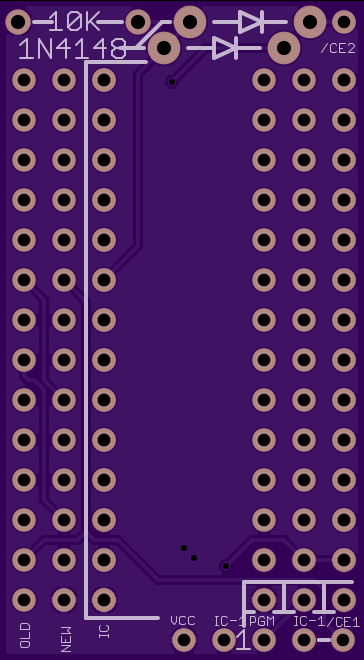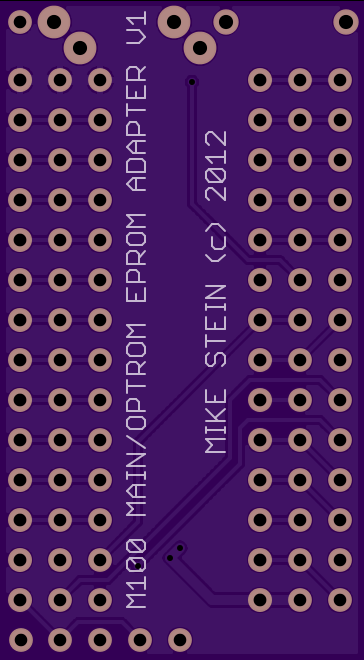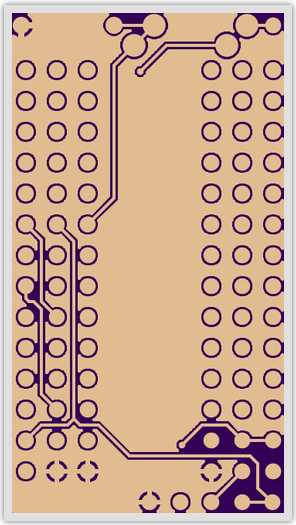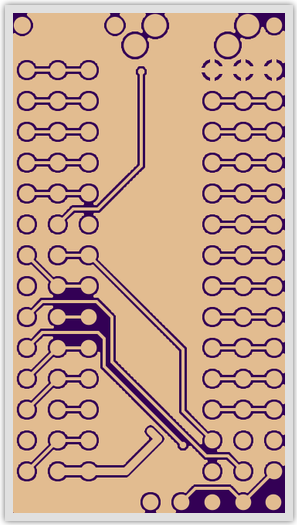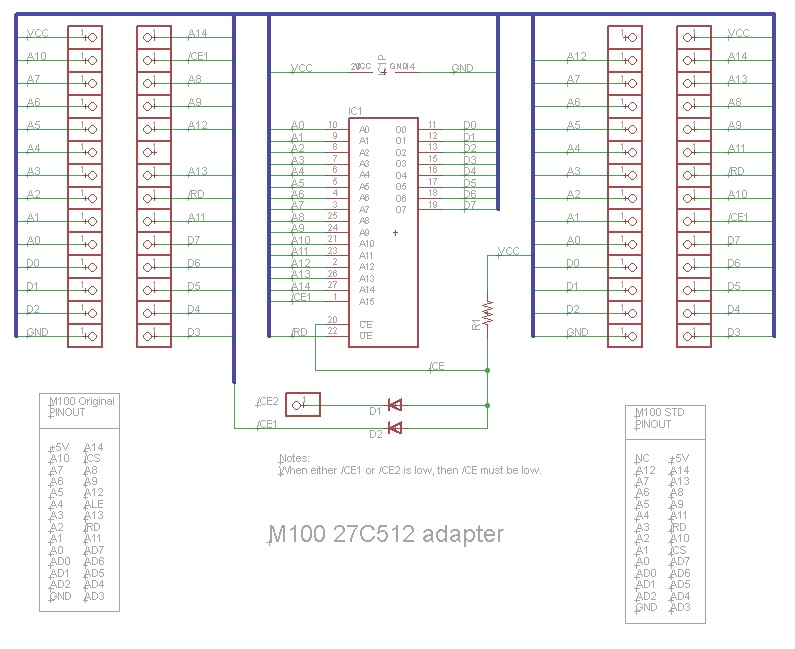M100ROM
NEWS!
- Mike Stein has graciously released his board design through Oshpark so that people can get access to boards and build themselves a ROM adapter for Model 100!
Supported Models
- Model 100 only
About
The M100ROM adapter has several (fixed at assembly time) options:
1 - Just convert non-standard pinout to standard JEDEC, to use a 256Kb (32KB) (E)EPROM in an old M100. 2 - Same as #1, but using a 512Kb (64KB) (E)EPROM with an option ROM image in the upper half. 3 - Same as #2, but without pinout conversion, for use in a 'new' M100.
If you have a 'new' M100 with the standard socket you can accomplish #3 with a simple 'shim' socket that goes between the system ROM socket and the EPROM and breaks the chip select connection, replacing it with a diode-and connection (with pull-up) to both the original system and the option ROM select signals and a connection to the '512's uppermost address line. The only added connection to the board is a clip lead to the ROM select at M5 pin 5.
How to Get One
You need the following parts-
1x M100ROM PCB from Oshpark 2x 1N4148 diode or equivalent 1x 10K 1/8W or 1/4W leaded resistor 1x 27C256 or 27C512 (pre-programmed ideally) 28x pins for connecting the module to the M100 ROM socket
A bit about EEPROM Pinouts
The table below shows the standard pinouts for 27C256 and 27C512, included for reference.
Assembly
If the application is case (1) above and you only are using a 27C256, there is no special wiring needed.
If the application is case (2) or (3), then you need to jumper the via marked CE1 to the adjacent via marked IC1.
Board
The bare PCB can be ordered here:
https://www.oshpark.com/shared_projects/Kil9S1ya
Cost is 7.50$ USD for 3 boards.
The copper for this board is shown here for wiring clarity.
Programming the EEPROM after assembly
If you did not pre-program the EEPROM, then you can do so after assembly with a little extra effort. The vias at the bottom are used to program the device after it is assembled.
On a 27C256, to program the device you must tie pin 1 to Vpp. Apply Vpp to IC-1 via.
On a 27C512, to program the device you must tie pin 22 to Vpp. Apply Vpp to PGM via.
Of course you must have valid signals on the address and data lines, and you also have to apply 5V to Vcc via, and ground at socket pin 14.
Schematic
Schematic was lost unfortunately. However an earlier version, without the extra vias for programming the device after manufacture, is here. Note that the schematic shows the pinout for the 27C512, and pin 22 is also used as programming voltage. On the 27C256, programming voltage is on Pin 1, which in this case is connected to via marked CE1.
Installation
Installation of the hardware is a piece of cake.
Step 1
Flip over the
Step 2
Replace the cover.
Done!
